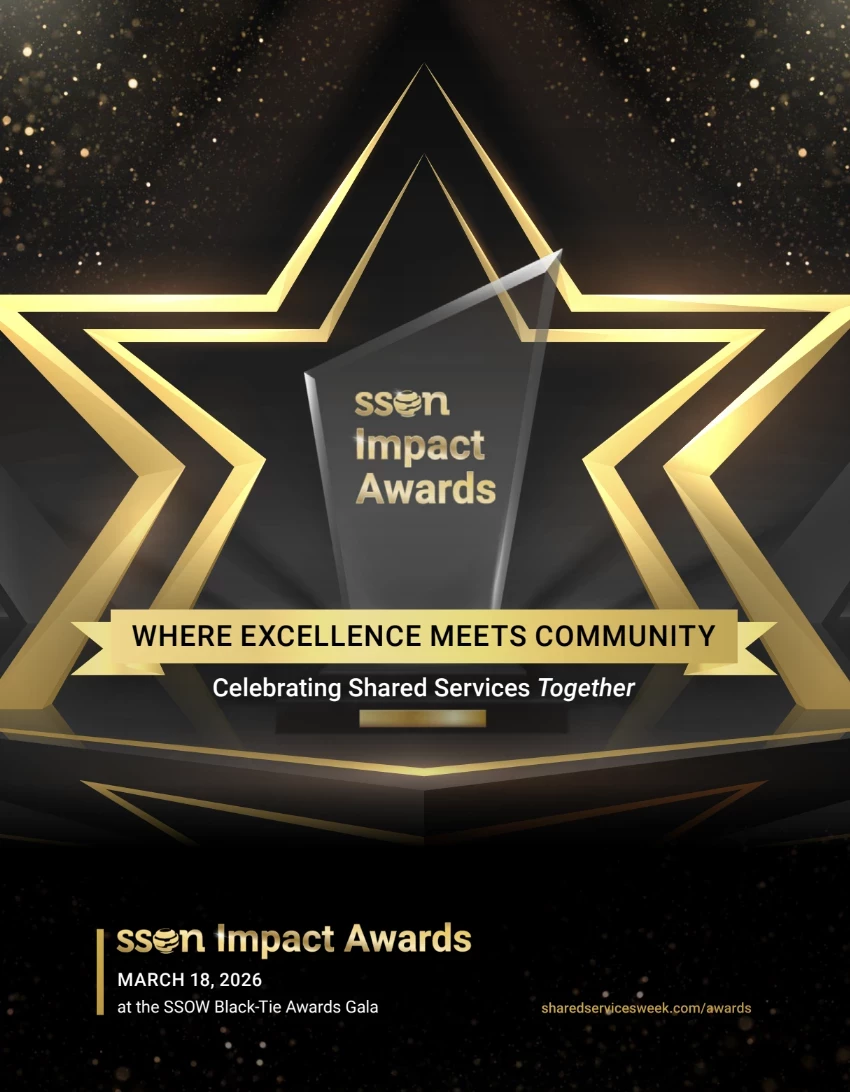Stopping The Backward Slide: How to Fight the Gravitational Pull Towards Functional Models
If you are not moving forwards, you’re at a significant risk of regressing
Add bookmark
In last month's GBS Paradox article (The GBS Paradox: Single vs. Multi-Functional ‘Global’ Business Services) we introduced the evolving stages of business service models evident in most large and mid-sized corporations today, noting that the journey is often not linear across the different models.
While most research suggests a general move toward multifunctional global business services (GBS) models as compared to single function shared services, many practitioners question the sustainability of such models … this disconnect is what we refer to as the “GBS Paradox.”
In this article we explore specifically how companies that have adopted the early stage multifunctional GBS model (what we call the aggregated business services model) navigate to continue to add value at this very critical inflexion point, and avoid an inadvertent backslide of diminished value.
A Refresher
Last month's GBS Paradox article introduced the following four common organizational models for business services as they evolve through various phases of the improvement journey:
We use the concept of evolving through stages to reflect that companies need to continuously adapt their models to different value propositions and business services capabilities, consistent with the overall company strategy.
As many GBS leaders will attest, moving forward is not a foregone conclusion. In fact, history points to a strong propensity to stick in the Aggregated stage – and even the gravitational pull backward to a pure functional model is very strong.
There are a number of noteworthy examples of back sliding including very well regarded GBS organizations across all industries. So, what’s wrong? Is the model flawed or is the path too contrary to existing culture to survive many organizations?
GBS Model Definitions

Model vs. Culture
For decades, many large companies saw the pendulum swing from centralized to decentralized staff function models and back again. Economies of scale and promoting a culture of business unit (BU) autonomy were at odds and constantly pulling the pendulum in one direction or the other. The advent of shared services sought to stop the churn in favor of shared delivery centers that offered common staff function activities “as a service” to BU customers - a model that capitalized on scale while honoring BU autonomy.
Activities considered “core” to the BU were retained by the BU and non-core, common activities were aggregated across BUs into a shared delivery organization. While the years have seen many advances in the functional shared services model, this fundamental change of imposing a service mindset over like-activity clustering proved the secret sauce in stabilizing disruptive organizational change. Today, over 90% of large US-based multinationals operate some form of shared services, and the scope of activity deemed “shareable” has greatly increased.
That’s not to suggest it was easy – after all, this level of adoption took three decades to realize. Some organizations spun their wheels several times before gaining traction. As with all innovation, some were pioneers and others followed, as the model met and exceeded its value promise. Eventually, for the vast majority, a better model seemingly trumped culture.
For a number of years now we have seen a similar rollout of GBS – pioneers proving the model with others following. But even with clear benefits of GBS, adoption has seen its share of resistance, which raises some fundamental questions. Why are companies stalling in the second stage – or even regressing? Why can’t a better model trump culture this time? More practically, if you are a leader of an aggregated business service organization, what steps should you be taking to preserve and continue the journey?
Learning from the Past
The brief history of the shared service pendulum feels very analogous to today’s GBS Paradox. So . . . architect a better model and they will come, right? But maybe we got the lesson wrong. What if model didn’t trump culture. Let’s face it – does anything trump culture? And it wouldn’t have taken 30 years if organizational models were primarily an intellectual exercise.
Quite probably, the ideals of a better model moved adoption forward, but an aligned culture was needed to sustain it. So, what have we learned from our own collective pasts to inform sustainable transformation – and how can we align culture to support and sustain the GBS journey?
- It starts with belief. It’s not purely an intellectual exercise, but it does have to start there. As with any change, the value proposition must be clear, well communicated, easily understood and constantly reinforced. Individuals who have progressed in their careers through functionally aligned roles, will tend to understand and favor functionally dominant models. Recalibrating perspectives to recognize the value in a fundamentally cross-functional model requires a modification in beliefs. Particularly when the business services organization moves beyond transactional into judgment-based and analytical work, mechanisms must be in place to infuse the delivery organization with functional expertise. Organizations have successfully used a number of methods including permanent and rotational assignments, staff training and certification programs, and functional involvement in performance management and career pathing. In addition to providing transparency to staff qualifications, such practices reinforce a collective team mindset.
- Organizational change demands strong champions. Most business service deployment programs recognize the importance of change champions. And in our experience, functional leaders tapped to carry the banner do a good job during the transformation program. But attention tends to wane post deployment with the burden of leading change efforts falling too heavily on the business service team. Regular, visible support post-deployment from functional leadership is critical and should be orchestrated via a comprehensive, ongoing communication program.
- Talent makes it work. As the GBS organization evolves into judgment-based services, analytics, digital, and artificial intelligence, the need for critical and hard to find skill grows exponentially. This puts significant demand on the GBS organization to recruit and develop talent and to team with third party experts as necessary. Also, success in this area, particularly when visible to the broader organization, can go a long way in reinforcing belief in the model. Conversely, if the broader organization and functional leaders don’t believe necessary talent exists, GBS won’t be granted license to expand into these more advanced services.
- Make the leap to Teaming. In the most successful business service environments the delivery organization operates as an extension of the functional team. As previously noted, customer service has historically been a key behavior underpinning successful functional shared service models. Making the shift to teaming is a significant leap, since it’s a behavior that must be adopted by both the delivery organization and its functional customers. Teaming should be modeled by business service and functional leaders and successes recognized throughout the organization. When behaviors and norms begin to shift, culture isn’t far behind.
- Penetrate and radiate. Sometimes, moving forward through the business service stages isn’t immediately in the cards. Expanding service scope is a great way to continue momentum when other progress seems to stall. Growth could mean more BUs, more geographies or wider service scope. When the latter, as more activity within end-to-end processes is brought under business service scope, a future shift to an integrated model become less arduous. Service expansion also often provides an opportunity to bolster talent and develop new skills – a prerequisite for stage evolution.
- People don’t rally around economics. The vast majority of companies won’t launch a major initiative like building GBS without a strong business case. But when capturing the heart and minds of executives and employees, focusing on savings is rarely compelling. Higher order goals – like improving customer and employee experience, transforming end-to-end processes, embarking on a digital innovation program or enabling a virtual workforce – are generally much stronger rallying themes than shaving pennies. When conceived and communicated well, these change themes can be the “secret sauce” of advanced GBS models, akin to the “as a service” mindset critical to early shared service success. Conversely, if the value proposition is purely economic, the model will ultimately regress as incremental savings dwindle year-over-year.
- Power is temporary; culture lives on. The migration to multifunctional GBS model requires alignment at the C-suite level. But what happens when executives in those positions turn over? For many companies that have slid from integrated business services back to functional shared services, turnover in the C-suite is the impetus. But it’s not the main reason. If the organization hasn’t fully embraced the GBS model – not just process, but beliefs and behaviors – then new chief executives see a disconnect. It becomes too easy to pick apart a model not supported by the organization’s culture. Stepping back, it’s not the executive turnover that causes model regression – after all, turnover should be expected. It’s complacency in relying on consistent leadership support without paying enough attention to other dynamics.
Business Service Governance Considerations
Before you determine how best to apply these lessons to your organization, you first need to consider your governance model. The ways and mechanisms by which your business services have been established, guided and recalibrated set very real parameters, guidelines and restrictions for effecting change. Put bluntly, this change can be positive and transformational in moving your aggregated business services forward towards an Integrated model or negatively receding to a functional model. Governance is critical to effecting change just as culture is critical to sustaining it.
We see three basic governance constructs adopted for multifunctional GBS organizations. First, is a “landlord” model in which business services exists primarily as a common host and enabling umbrella over functionally aligned shared services. Next is a joint platform model where the business service organization and functions share responsibility to build and manage a common shared service platform. And the last is a service company model where business services operates as an independent operating unit on par with the company’s business units, selling services to functions and BUs. As a general rule, these governance models align progressively with the different GBS organizational models defined earlier as outlined below:

Turning Learnings into Action
If you’re a GBS Landlord . . . then you’re operating in an aggregated business service model. You’re on tenuous ground and very susceptible to sliding back to a purely functional model. Frankly, you lack the authority to shift towards an integrated end-to-end process model. Your primary change mechanism is persuasion. All changes you make within your business service organization rely on your ability to sell your ideas to functional leaders who hold power to effect change. While you likely report directly to a single functional leader, getting them all on the same page in support of an integrated model is difficult under this governance structure. There is no mechanism for your functional leaders to act in concert to advance business services. And as a result, you are likely stuck in a mostly transactional service model.
Step one is recognizing you can’t change the business service model or truly impact culture until you first fix governance. If one doesn’t exist, you should create a cross functional governing committee to work collectively to address model shortcomings. You should recruit an executive sponsor to chair the committee and champion change. The functional leader to whom you report is a likely candidate, but not necessarily the only one. Together with your change champion, you will work to reorient business services under a joint platform model.
If you’re a GBS leader with a joint platform construct . . . and you are managing an aggregated business service organization, then your focus should be on continuing to add services while moving forward towards integrated business services. A primary change will be an operational shift to process teams from functional teams. Step one is leveraging your governance model to effect that change including naming functional leaders as sponsors of cross-functional end-to-end processes. But a critical second step is working purposefully, with and through governance, to foster a culture that will sustain that change. This will involve modifying beliefs and norms, ensuring necessary talent is visibly in place, creating a teaming environment, and communicating a compelling case for change, not dependent merely on economics. Lastly, diligence is needed to avoid the trap of complacency. Creating a culture that embraces business services to survive expected changes in sponsors and leadership is a never-ending endeavor.
If you’re a service company . . . your primary focus on securing necessary investments to innovate and build capabilities, while continuing vigilance on creating a sustaining culture.
Concluding Thoughts
When it comes to business services, if you’re standing still you’re moving backwards. Most industries have seen growing adoption of integrated business service models so, relative to your competitors, if you’re not moving forward through the evolutionary business services stages, you’re losing ground to leaders in your industry.
Worse, if you are not moving forwards, you’re at a very significant risk of regressing. There’s a natural gravity towards pure functional models – people, including functional leaders, tend to find comfort in models that seem to recognize and reward functional expertise. So, if you’re not fighting that gravitational pull by purposefully working against it, you’re likely, at some point, to slide backwards.
Finally, your organizational culture and governance model can either work for you or against you as you work to advance business services in your company. Applying learnings from the early days of shared services in order to foster an organizational culture supportive of advanced business service models will be critical to your success.



































